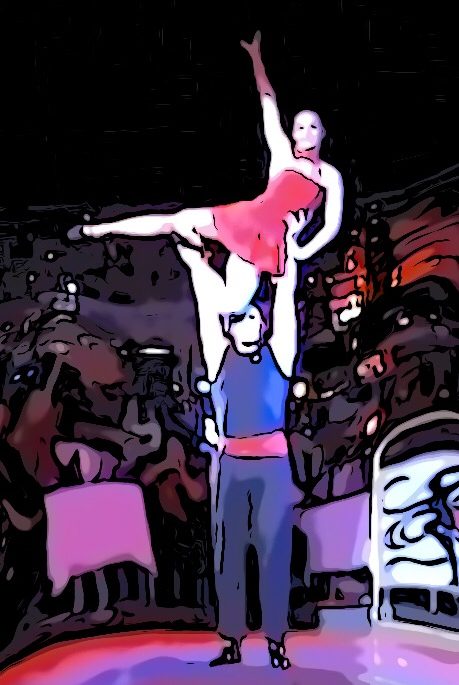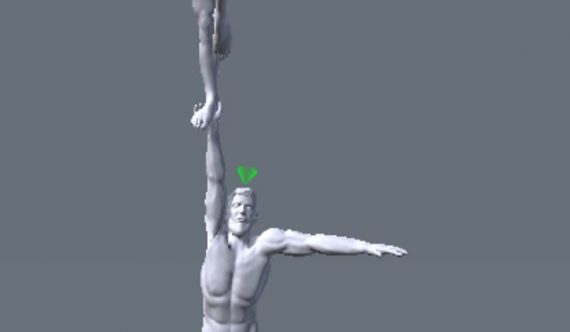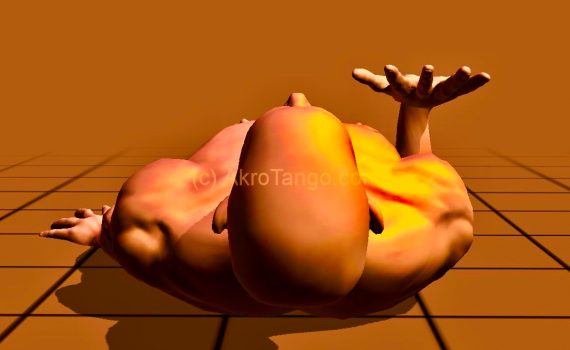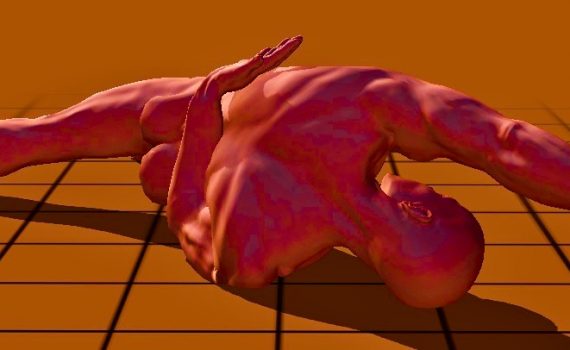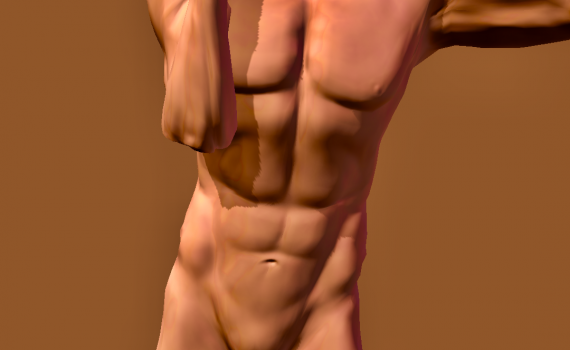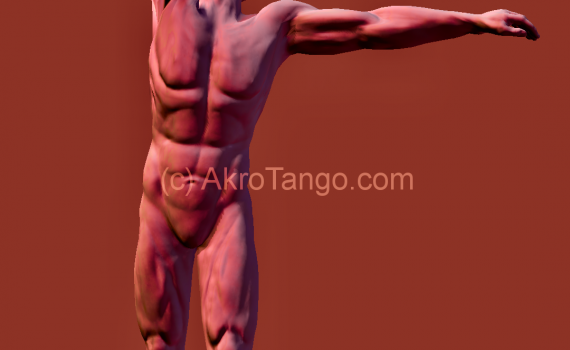Pitching is a trick for the good advanced, but can be increased to any difficulty as desired. As preparation I recommend: the flyer jumps up from the side (lying base) with a quarter turn to the one-legged standing onto the one-armed at straight arm, the flyer jumps up from the front (kneeling base) with a half turn to the one-legged standing onto the one-armed at the short arm and the flyer jumps up from the front (standing base) with a half turn to the standing on the hands with straight arms. This trick starts in the deep squat for the […]
Kategorie: 1 single arm
Not meant is a short-term one-arm balance due to a high relieve. However, as soon as the entire weight arrives on the arm, the risk of shearing is very great. This not only causes pain in the base’s wrist, but can also cause the flyers foot to kink away. If necessary, the base can lean the hand at the hip. Be sure to keep your elbows as close to the body as possible! I can only imagine of two sensible positions of the flyer: 1-leg standing one-armed-handstand In all other positions either the ground is too close, or the […]
One of the most difficult positions of the base, because he can balance little with his straight-arm. The hand should always keep above the shoulder within this position. The ball of the thumb stays under pressure → does not yield and also does not create a cavity in the palm of your hand! If the free hand is used for stabilization, it supports the ball of the thumb of the balancing hand. Initially, the free hand will stabilize the Einarmer, and then release carefully. Some flyers immediately feel the loss of stability and break off. The free shoulder stays on […]
Balancing on one-arm with the elbow on the ground requires a very precise perception of the base for the correct force line, otherwise it will shear off very quickly. What should not be underestimated also at this altitude. Therefore and also because the view to the flyer is very limited, the one-armed is shored in both positions. However, special attention is always on the stability of the wrist, so the flyer does not have to stand uphill. 1. Lying sideways, the forearm is leaning at the back of the back and 2. Lying on the stomach, the hand shore itself […]
In order to avoid shear forces when to enter the one-armed, the flyer must learn to lean actively from the middle of the body in the desired direction laterally. The axis of rotation for the handstand is the shoulder and when standing the hip! If the base does not prevent this leaning, the weight of the flyer tilts on one arm in a controlled manner until the center of gravity reaches above the axis of rotation and the base’s carrying hand. The base follows this tilting with his elbow … Then, when the weight has almost completely arrived in the […]
This balance is relatively easy as long as the flyer is stabilized (e.g., sideways flyer or shoulderstand) or by the other hand of the base (e.g., cross-breaker at the leg or knot handstand at the upper arm). However, the balance without some form of stabilization becomes difficult. The entrance usually takes place via one of the stabilized positions … which are already manageable by advanced bases. Without picking up the residual weight from the stabilizing arm, this balance starts extremely shaky. If you have not automated the pick-up, you should practice it again with simpler positions (for example, with lying […]
